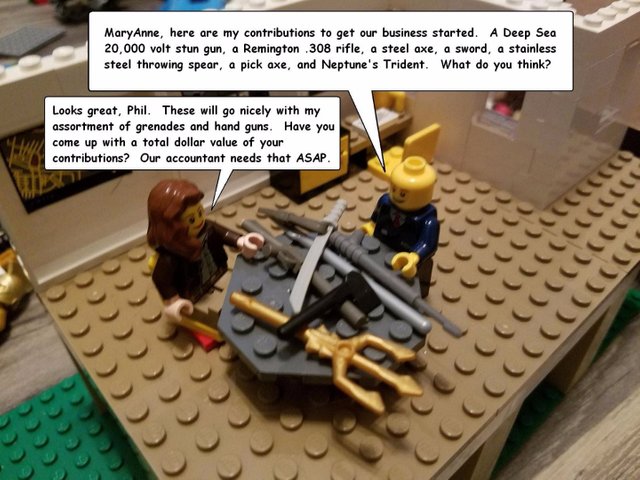Starting a Business With A Partner - Tip #2

Tip #2 - If contributing personal assets to the business at the beginning, determine an accurate value from the start and agree upon it.
This is my second post in a series in which I will offer advice about starting a business with a partner. I want to share my experiences in the hopes that I may save someone else a huge headache and some serious money. My first post in this series can be read here: https://steemit.com/business/@countryinspired/advice-for-starting-a-business-should-you-decide-to-partner-up
My former business partner and I started a carpentry and remodeling LLC. He contributed knowledge of concrete, framing, drywall finishing, and bookkeeping, while I contributed my knowledge in design, framing, trim carpentry, woodworking, and building custom solid surface countertops.
Each of us owned numerous personal power and hand tools that we brought to the business, in addition to some trailers and vehicles. What we failed to do from the beginning was assess a value of each item, then come up with a total value of our contributions. We should have looked over each other’s list of items, approved (or disputed) the values listed for each item, then made sure both of our contributions were equal. Those figures should then have been documented on the books.
When our relationship turned sour and we agreed to dissolve the business, we were required to itemize our contributions and apply a value to each, not in their current condition but in the condition at the time they were contributed to the business. This was difficult, because certain items depreciated faster than others, plus we had to think retrospectively...What was this worth a year ago when we started the business?
My partner simply recorded each item he contributed, listed the purchase price when it was new, then applied a 50 percent depreciation rate. I, however, disregarded the new purchase price of my contributions, and simply recorded my perceived value on each item -- basically what I thought I could sell them for in their current condition. My items ended up being valued at 20-40 percent of their purchase price when new. Since I depreciated my items at a higher rate, according to our accountant, my contributions to the company were less from the beginning, which decreased the dollar amount I received in the end.
That is why it is important to assess an accurate value on your contributions from the very start. Each partner should use the same formula, then review each other’s list to see that the values on each item are fair. If one person’s contributions are less, they either need to find more items to contribute to the business, or substitute the difference in cash. Then each list should be dated, signed, and filed away by the accountant, or whomever handles the bookkeeping. A copy of the signed document should be kept by each partner for reference, as well.
I hope you find this information useful. As I have said, I am no business expert, and a lot of this may be common sense practice for other people, but I viewed my business partner as a friend. I trusted him so much that I let my guard down and failed to take precautions. Do not repeat my mistake, no matter how much you trust your partner. Protect yourself from the beginning.